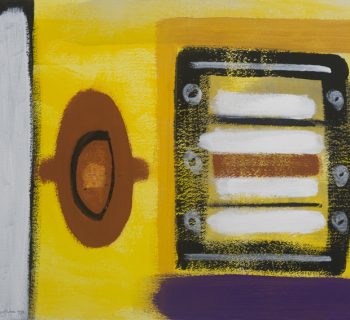Sea, Rock, Earth and Ice
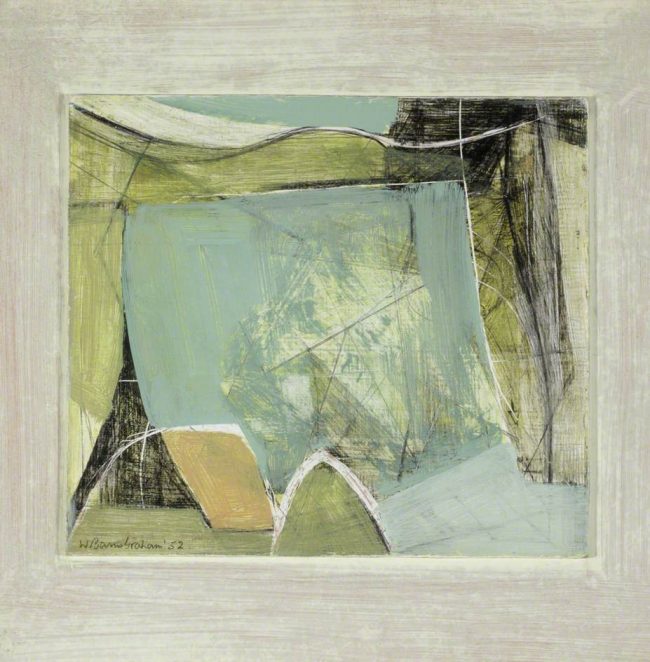
Winter Landscape, 1952, Oil and pencil on board, Jerwood Collection
Following my article on the continuing success of Wilhelmina (Willie) Barns-Graham’s glacier paintings in the salerooms comes an exhibition at the JERWOOD GALLERY, Hastings Wilhelmina Barns-Graham: Sea, Rock, Earth and Ice (13 June – 7 October 2018) that includes a group of glacier pictures and goes on to show what came after. It outlines Willie’s wider explorations into the structure of, and forms found in, landscape.
The Jerwood Gallery takes their own Barns-Graham painting Winter Landscape, 1952 as the rationale for the display. The starting point is a strong group of glaciers that includes Glacier Painting, Green and Brown, 1951 from Sheffield Museums (the show travels to the Graves Gallery, opening 8 December) before showing how the series developed away from having direct glacier references to one of rock forms. Although this progression is predominant by 1953 there are some earlier examples – Three Rock Forms 1951 is particularly fine. In this instance one can see Willie starting to apply what she has learned from the Switzerland experience to the local Cornish landscape, the titular rocks being three standing stones that overlook the coast. The manner in which she defines the forms mirrors that used in the 1949 Grindelwald pictures and the palette is equally similar with a range of icy blues and greens. This is not about capturing the dark brooding standing stones in their Cornish habitat but a more creative treatment. The physical presence of the stones is described via an abstraction of the forms with a play of colour and tone, offset against a more naturally defined coastline, sea and islands. The contrast of solid and scraped areas of paint is typical of her handling style throughout this period.
The aforementioned Winter Landscape is an interpretation of both the surface and the substructure of the landscape, and well illustrates her approach to understanding the physicality of the countryside. In the first half of the 1950s she travelled to Italy on at least four occasions, spending time in Sicily and Tuscany, always accompanied with note pads, pencils, pen, ink and tempera. There is an extensive collection of drawings from these journeys which show how she got to grips with landscape structure in a way that is unique to her. In 1992 Willie described her thoughts on drawing as a “….discipline of the mind. I seek to discover abstract shapes, accepting the subjects demands often touching different moods. I have sessions of drawing and consider it important to make studies, to develop one’s awareness to inner perception, collecting shapes that become my shapes.”1
Although the most progressed images of Willie’s art are inspired by place they are not about place. She is never so literal in her painting where subjects that have inspired her (“I attempt to seek out sculptural, architectural; and linear qualities”2) have been synthesised, transformed through her art practice. In her rock paintings Willie achieved a tough, uncompromising abstract language. In works such as Composition (Sea), 1954, she focuses on the formal relationship of each shape, angle, directional trajectory, one to another, and of the individual to the whole. This is a painting concerned to evoke not depict3.
Willie’s focus on rock forms is particular to the first half of the 1950s. Although future years would see an ongoing relationship between her environment and her art (Willie was forever inspired by the world around her) it was many years later before she reacted quite so passionately again to a physical landscape feature – Lanzarote’s lava fields – when she visited the island on four occasions between 1989 and 1993. This is the next serious body of landscape studies that are comparable to the Italian drawings from forty years before. These are wonderful – they capture the energy of ejected lava, with its variety of shapes and textures – but, as before, they do not immediately inform her painting. This is not to say that the island bore no influence on her art – a new range of blacks and sienna becomes part of her palette.
The unspoken subtext of the Jerwood exhibition is one on Willie’s travels and the significance of these journeys on her art. This is the principal theme of a new Wilhelmina Barns-Graham Trust exhibition under development called Inspirational Journeys which examines more specifically the impact of travel on Willie’s wider practice that led to new perspectives, themes and stylistic changes. For anyone wishing to partner the Wilhelmina Barns-Graham Trust on this exhibition please email us on info@barns-grahamtrust.org.uk
Notes
- Wilhelmina Barns-Graham: Some Thoughts on Drawing. W. Barns-Graham Drawings, exhibit catalogue, Crawford Art Centre, St Andrews 1992
- Ibid
- Lynne Green, Wilhelmina Barns-Graham: A Scottish artist in St Ives, exhibition catalogue 2012, p.34
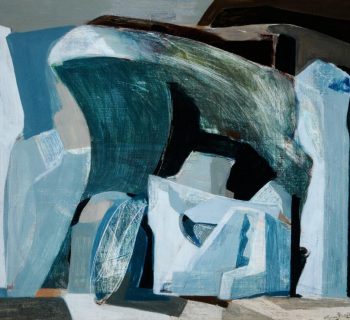
Glacier Painting Green and Brown,1951, Oil on canvas, Graves Art Gallery Sheffield
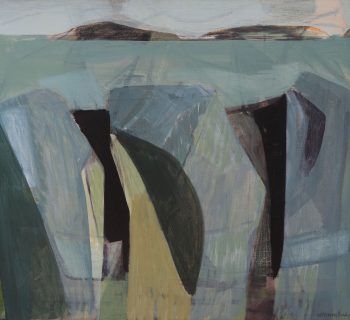
Three Rock Forms, 1951, Oil on canvas, BGT1119
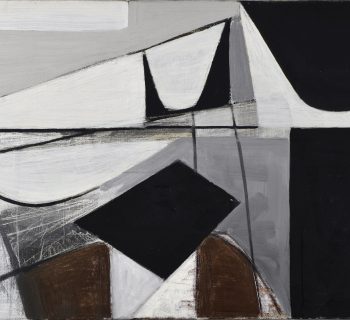
Composition (Sea), 1954, Oil on canvas, BGT6407
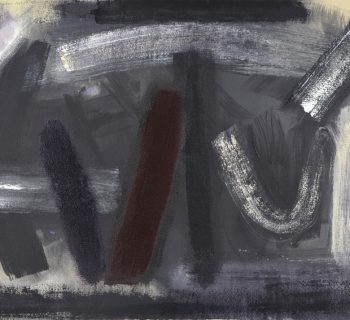
Scorpio Series II No28, 1996-97, Acrylic on paper, BGT3077
